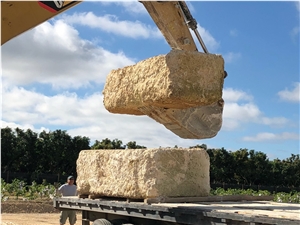
A steady input of fine terrigenous material is apparent. Lithogenesis: Fluctuating very shallow marine/paralic/emergent environment. Subordinate siltstone and sandstone beds are present near the base of the formation. Rootlets are common, and some mudstones display seatearth textures and more variegatedĬolours, also indicating shallow, proximal conditions. Landform contribution: The Taynton Limestone Formation frequently forms ledges on valley sides and minor plateaux.Ī varied sequence of greenish grey, silty, moderately shelly and calcareous mudstones, pale greenish grey shelly marls and fine-grained shelly limestones with marine and freshwater faunas. The upper boundary with the Hampen Formation is present. The base of the formation is not exposed at this site. 7 m of the formation is exposed here, the chracteristic cross-bedded bioclastic/ooid grainstone facies. Type section: Lee's Quarry, Taynton Down, Oxfordshire (SP 236 152). Spatial distribution: Burford and area, Oxfordshire.

The upper boundary is marked by the upward passage into the finer Hampen Formation. Vertically, the conformable, lower boundary is with the Sharp's Hill Formation. In addition there is evidence of lower-energy environments with carbonate and terrigenous sedimentation. Lithogenesis: A high-energy, shallow marine, transient ooid bank or bar. Thin shell-detrital marl seams and discrete calcareous sandstone beds are not uncommon. In some localities it can be fine to very coarse-grained or medium to thickly well-bedded. It is typically well-sorted, often medium to coarse-grained and commonly it is described as a moderate to high bioclastic, ooidal grainstone. The Taynton Limestone is a buff/brown to pale brown, rock. Landform contribution: The Hampen formation tends to form hollows between the more resistant, harder units of the Taynton Limestone Formation below and the White Limestone Formation above. The type section and reference sections are all located in Gloucestershire. Spatial distribution: North Cotswold Hills. Westwards it passes into the upper parts of the Fuller's Earth Formation. Laterally the Hampen Formation passes into a very shallow marine-paralic in the Rutland Formation. The upper boundary is more diffuse with the White Limestone Formation.

Vertically the Hampen formation has a limestone and marl, resting sharply on the upper ooidal grainstone of the Taynton Limestone Formation. Lithogenesis: The Hampen Formation are interpreted as a crabonate facies deposited in a marine environment with some siliciclastic terrigenous input. The vertical thickness of this formation ranges from 4 to 11 metres. The limestone beds are characteristically grey to brown, thinly bedded, fine to very fine-grained, well-sorted, ooidal grainstone to packstone, commonly slightly sandy or silty, with small-scale cross-bedding. Previously known as the Marly beds (Woodward, 1894) this limestones with subordinate interbedded marls. The calcareous regolith contributes to the formation of the rendzina facet of the Cotswold catena. Landform contribution: The White Limestone caps escarpments and valley slopes, and forms broad plateaux throughout the north Cotswolds. There is a good exposure of the White Limestone at Kirtlington Quarry (SP 494 199). The type section and reference section are not accessible to the public (Shipton-on-Cherwell Quarry and Ardley Railway Cutting respectively). Spatial distribution: The BGS determined 'type area' is the Cherwell Valley from Woodstock to Ardley, where it is commonly ca.

Laterally, the White Limestone eventually passes into the Athelstan Oolite Formation south westward and the Blisworth Limestone Formation north eastward. The upper boundary is commonly a sharp, erosive boundary, with the Forest Marble Formation. Vertically, the White Limestone Formation is found overlying the marls or fine-grained ooidal grainstones of the Hampen Formation. Higher energy phases are recorded in the rock record by cross-bedded ooid limestones. Lithogenesis: The depositional environment for the White Limestone Formation is a protected, shallow marine setting with periods of reduced sedimentation resulting in the formation of hardground. Previously known as the Great Oolite Limestone, the White Limestone Formation is a pale grey to off-white or yellowish limestone, peloidal wackestone and packstone with subordinate ooidal and shelly grainstones, recrystallised limestone and/or hardgrounds at some levels with rare sandy limestone, argillaceous limestone, marl and mudstone or clay.


 0 kommentar(er)
0 kommentar(er)
